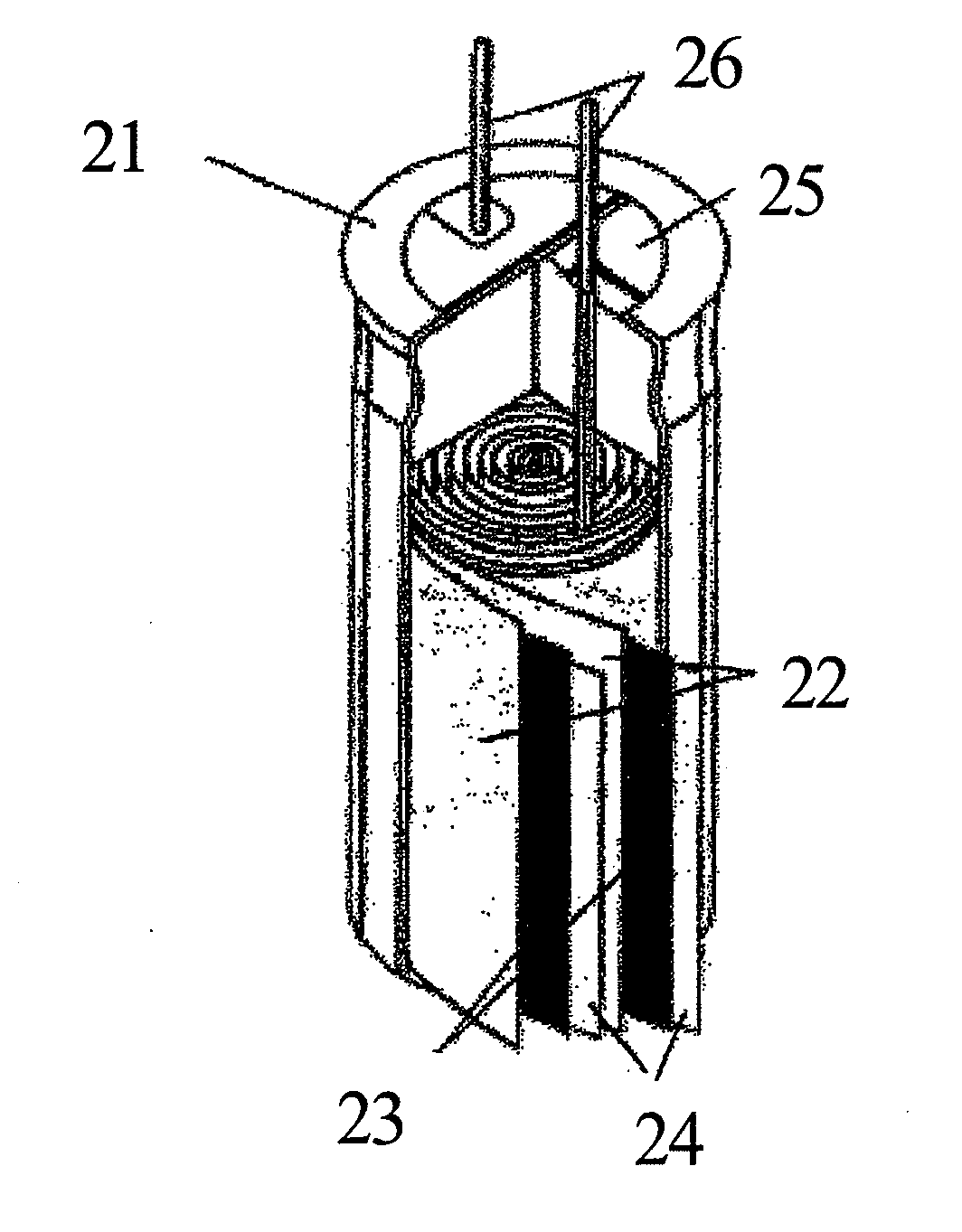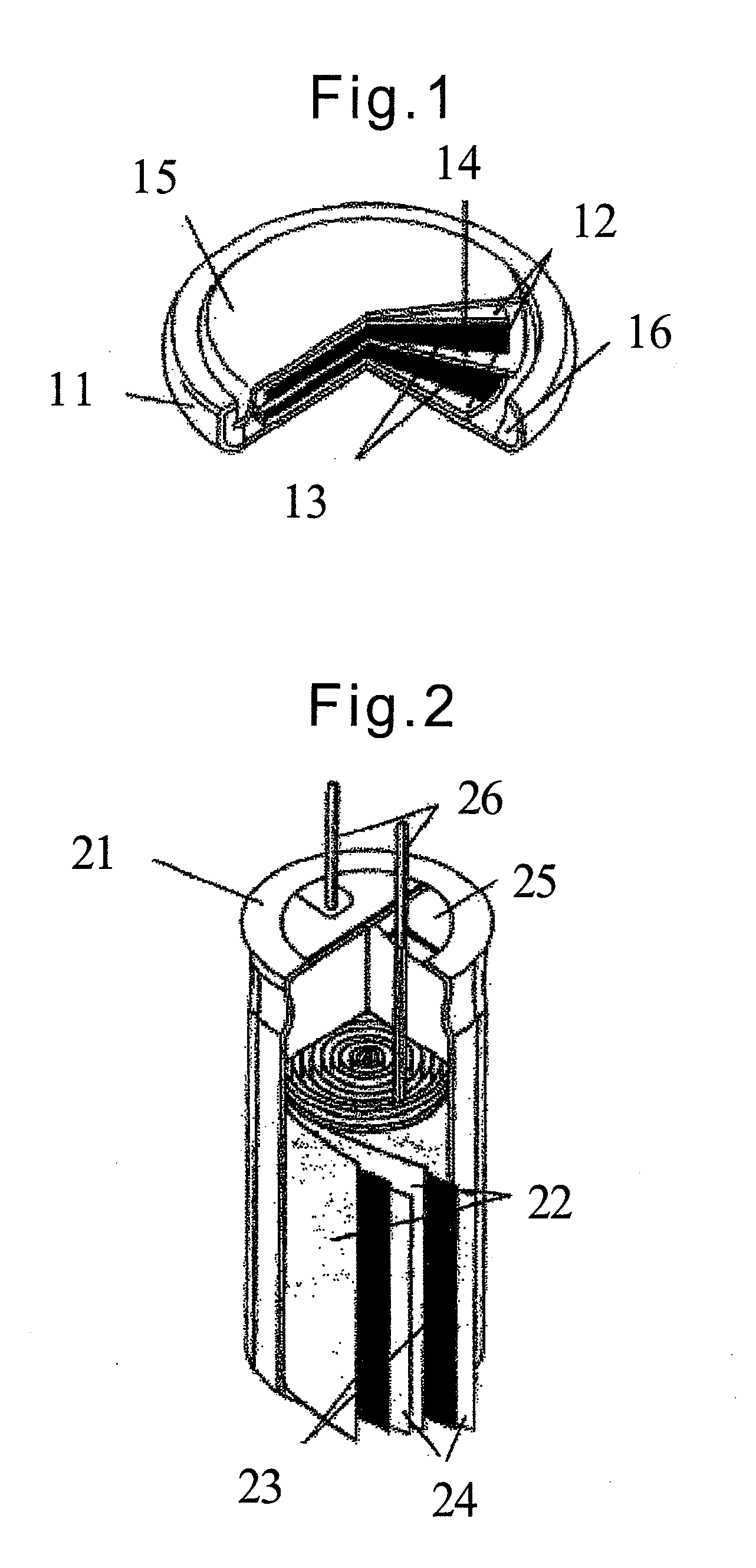Sodium secondary battery
- Summary
- Abstract
- Description
- Claims
- Application Information
AI Technical Summary
Benefits of technology
Problems solved by technology
Method used
Image
Examples
example 1
Production Example 1 for Manufacturing Carbonaceous Material
[0174]A powder of a phenol resin (powdery phenol resin, Sumiliteresin PR-217 (trade name)) on an alumina boat was placed in a ring furnace, and kept there at 1000° C. in an argon gas atmosphere for carbonizing the phenol resin powder. The argon gas flow rate in the furnace was 0.1 L / min per 1 g of the phenol resin powder, the temperature increase rate from the room temperature up to 1000° C. was about 5° C. / min and the retention time at 1000° C. was 1 hour. After the carbonization, the product was milled by a ball mill (agate balls, 28 rpm, 5 min), to yield a powdery carbonaceous material. The mean powder size was 50 μm or less. The mean powder size was measured as a volume mean diameter, by dispersing the carbonaceous material in an aqueous solution containing a neutral detergent and measured by a laser diffraction particle size distribution analyzer SALD2000J (registered trademark, by Shimadzu Corporation). The BET specif...
example 2
Production Example 2 for Manufacturing Carbonaceous Material
[0184]A liquid composition containing alkyl aromatic hydrocarbons was oxidized to a liquid composition containing aromatic hydroperoxides, which was brought into contact with an aqueous alkali solution to extract the aromatic hydroperoxides in an oil phase. The resulted oil phase was brought into contact with an acid to decompose acidly the hydroperoxides, converting the oil phase to that containing resorcinol, which was then separated to resorcinol and a low boiling components including an organic solvent and tar, to obtain tar. The tar was used as a residual oil at the production of resorcinol, and was placed in a ring furnace on an alumina boat, and kept there at 1000° C. in an argon gas atmosphere for carbonizing the residual oil. The argon gas flow rate in the furnace was 0.1 L / min per 1 g of the residual oil, the temperature increase rate from the room temperature up to 1000° C. was about 5° C. / rain and the retention ...
example 3
[0188]A commercially available carbonaceous material powder (Nicabeads ICB-0510 (trade name), by Nippon Carbon Co., Ltd.) was used as a carbonaceous material.
(1) Manufacture of Second Electrode and Raman Spectrometric Measurement
[0189]Using the carbonaceous material (ICB-0510), a round electrode (EA3) was manufactured as in Example 1. A Raman spectrometric measurement was conducted on the electrode (EA3), to find the R value to be 1.35. Further, with respect to a fitting spectrum of the Raman spectrometric measurement the B1 value was 55 cm−1 and the NR value was 0.94.
(2) Manufacture of a Sodium Secondary Battery 1
[0190]Using the second electrode (EA3), a sodium secondary battery (TB3) was manufactured as in Example 1 (2-1), and a charging and discharging test was conducted as in Example 1 to find that the first discharge capacity was 256 mA·h / g. Based on the discharge capacity at the second cycle, the discharge capacity at the 10th cycle was 97%, indicating good charge and discharg...
PUM
| Property | Measurement | Unit |
|---|---|---|
| Temperature | aaaaa | aaaaa |
| Temperature | aaaaa | aaaaa |
| Temperature | aaaaa | aaaaa |
Abstract
Description
Claims
Application Information
 Login to View More
Login to View More - R&D
- Intellectual Property
- Life Sciences
- Materials
- Tech Scout
- Unparalleled Data Quality
- Higher Quality Content
- 60% Fewer Hallucinations
Browse by: Latest US Patents, China's latest patents, Technical Efficacy Thesaurus, Application Domain, Technology Topic, Popular Technical Reports.
© 2025 PatSnap. All rights reserved.Legal|Privacy policy|Modern Slavery Act Transparency Statement|Sitemap|About US| Contact US: help@patsnap.com


